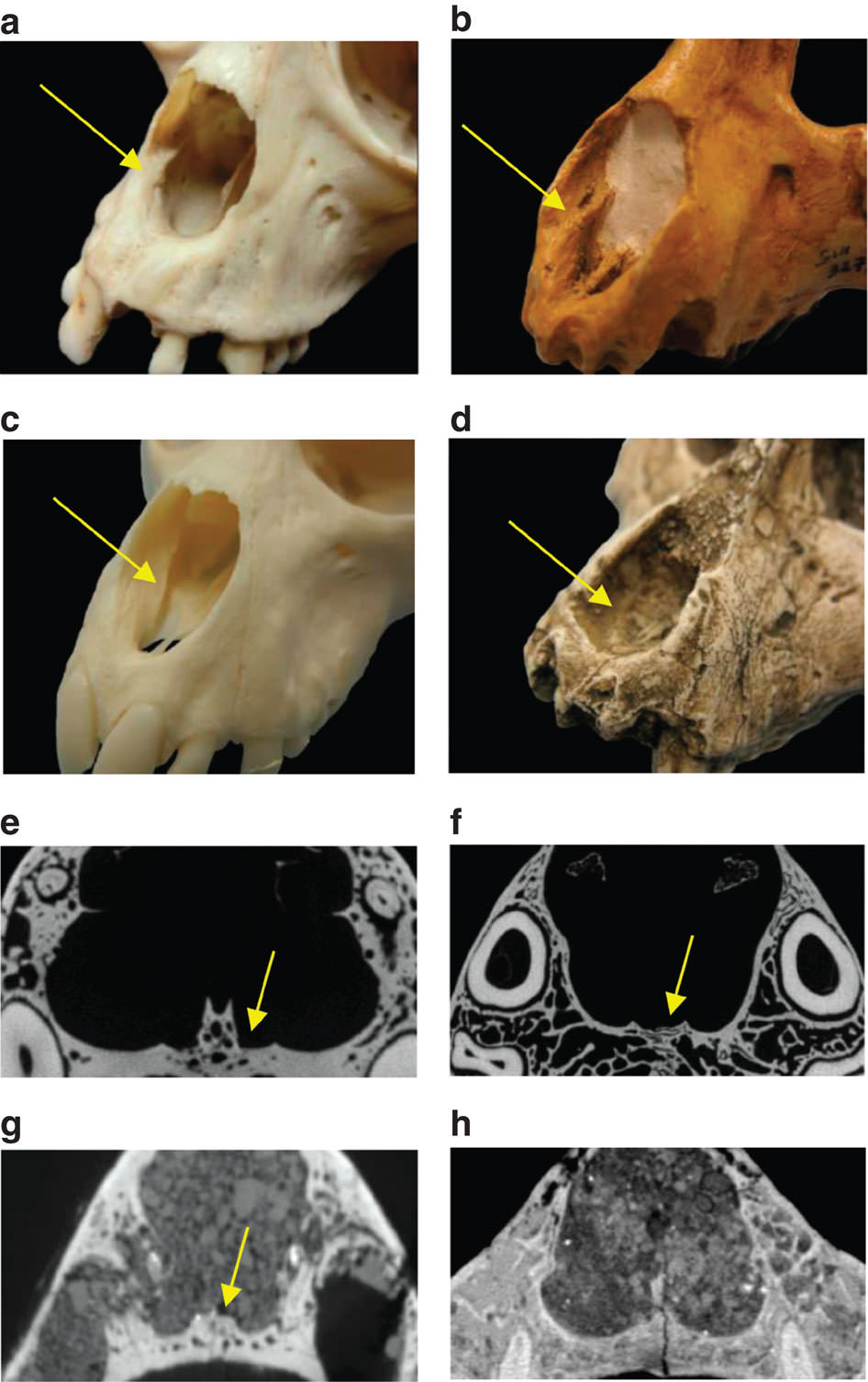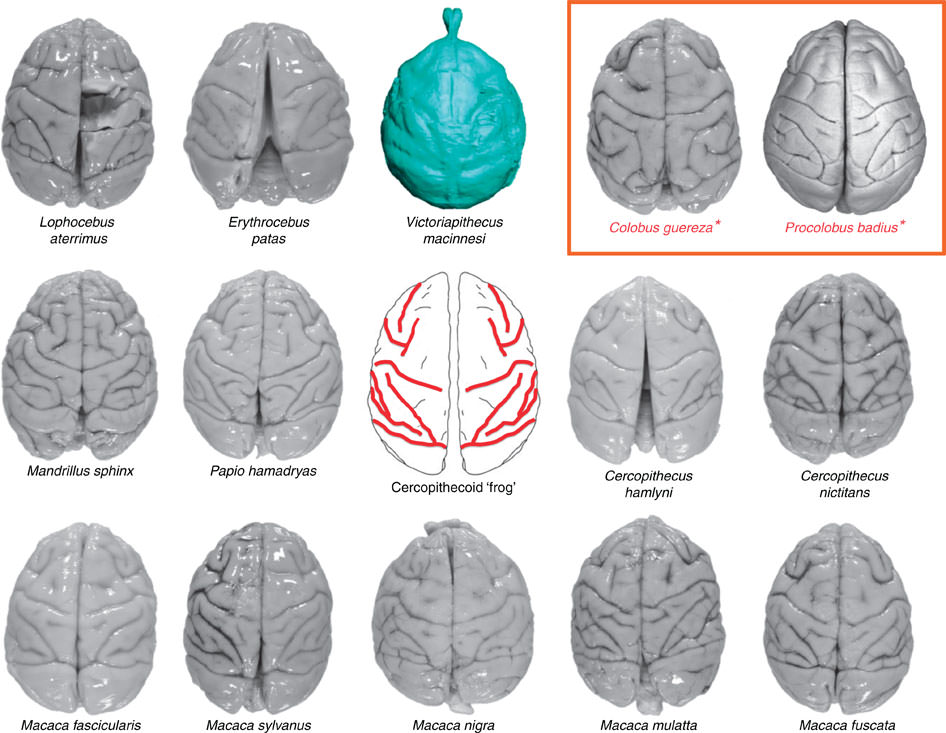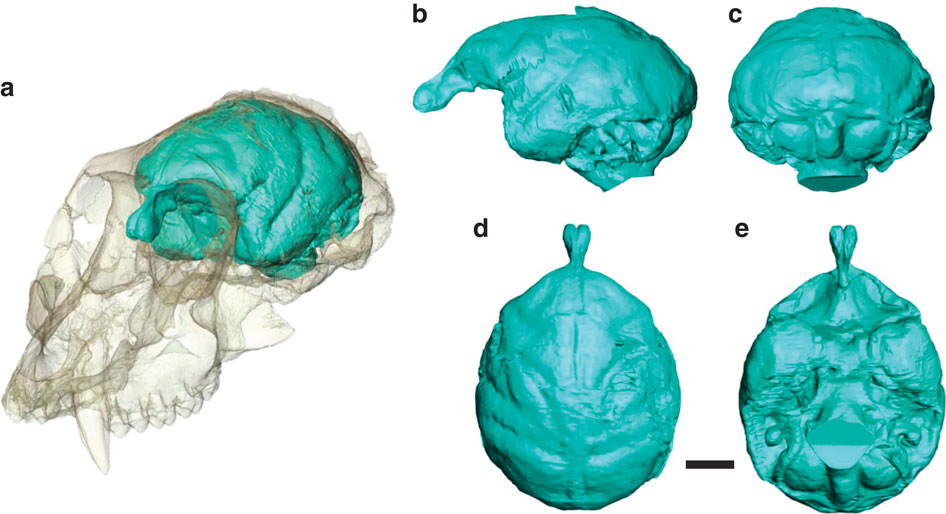Scientists have managed to find out more than they hoped when looking at a 15 million year old monkey skull. This is thanks to 3D computer imaging which ‘filled in the blanks’ when presented with an ancient skull. The skull is the oldest known cranium of an Old World Monkey.
The scientists examined the Victoriapithecus, an incredible example of an Old World monkey, which is part of the primate group that also includes macaques and baboons. Old World monkeys are one of the two main monkey groups and form part of the Cercopithecidae family, an old relation of humans and apes. Old World monkeys are different from New World monkeys in that they have a different shaped nose- Old World monkeys have narrow and downward noses like humans, which are called catarrhines. Contrastingly, New World monkeys have wider noses and outward facing nostrils, called platyrrhines, like marmosets and spider monkeys. New World monkeys live in areas like South America where the climate is tropical, while Old World monkeys live almost exclusively in Africa and Asia.

High resolution X ray imaging was used to create a 3D model of the monkey brain by researchers at Duke University along with the Max Planck Institute for Evolutionary Anthropology. Through the research and computerised model, the scientists were able to find out that Victoriapithecus actually had a brain size which equated to half the size of more modern monkeys. The size of Victoriapithecus’ brain had a volume of around 36 cubic centimeters. Fred Spoor, co-author of the new study, has indicated that modern monkeys have a brain which is equivalent to the size of an orange, while the brain that would be found in an Old World monkey is more similar to the side of a plum. Researchers were also surprised at how complex the monkey brain was as it had many wrinkles and folds which were put in place by the algorithms of the micro-CT scanning software. The distinctive surface was able to be seen in areas where scientists had previously had to imagine the size and shape of the brain.

The study has been published in a journal called Nature Communications. Lauran Gonzales who co-authored the study has said “In the part of the primate family tree that includes apes and humans, the thinking is that brains got bigger and then they get more folded and complex”. However, the study shows proof that this was reversed in monkeys and that they became more complex before the brains enlarged.
It is believed that modern monkeys’ brains had grown larger as their vision improved, which leads to them having a relatively small olfactory bulb. This shows that modern monkeys can’t smell with as much sensitivity and accuracy as their ancient relatives did. Modern monkeys traded their sense of smell for better eyesight, but the 3D images have shown that Old World monkeys had both a good sense of smell and accurate vision too.
The study has concluded that just because a brain is larger, it doesn’t mean that it is more complex. Studies on humans have proved this too. One which was conducted on an 18,000 year old human skull found that even though the brain size was small, Homo floresiensis was able to do things that we consider complex such as fire lighting and the collection of food.
The findings from the study have been able to offer lots of new information about the evolution of primates, as the 15 million year old skull dates from a time from which there are very few fossils. The new findings have been able to put to rest theories about whether increased brain size or increased brain complexity came first.

